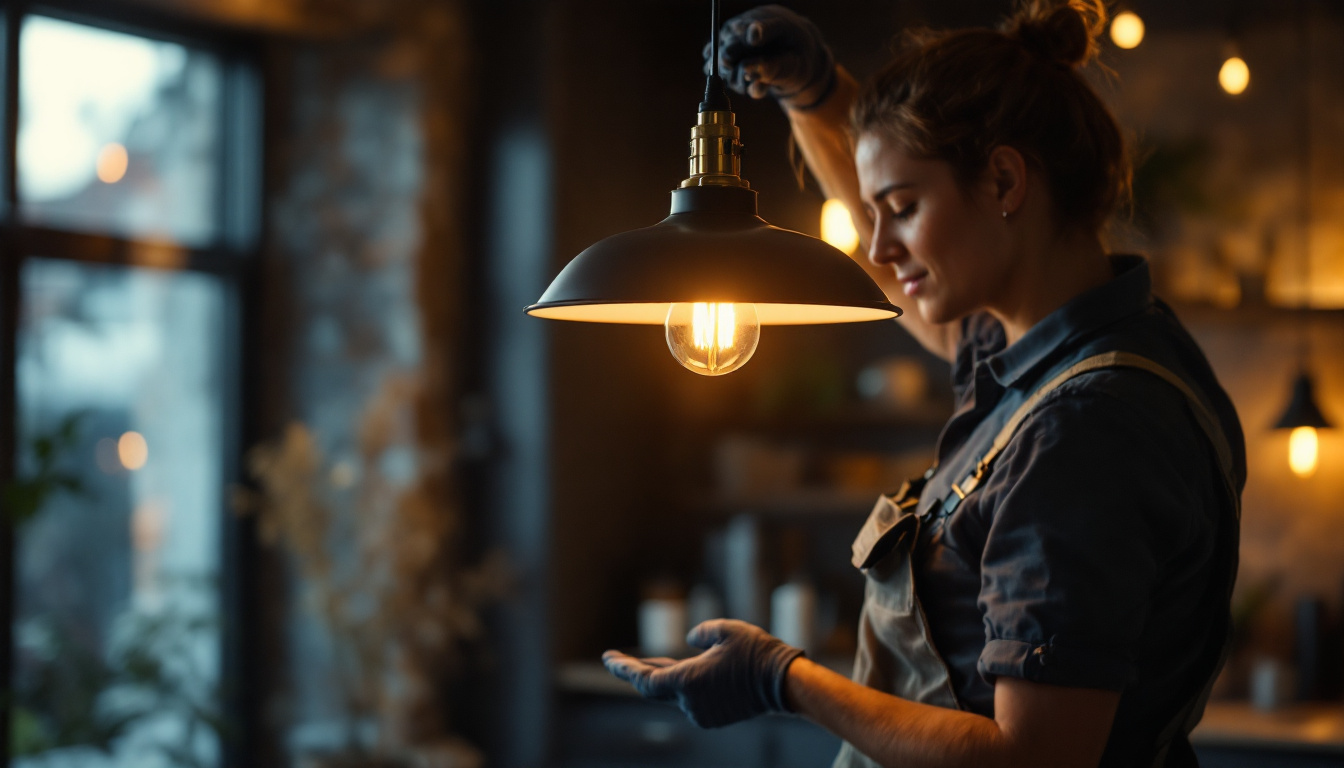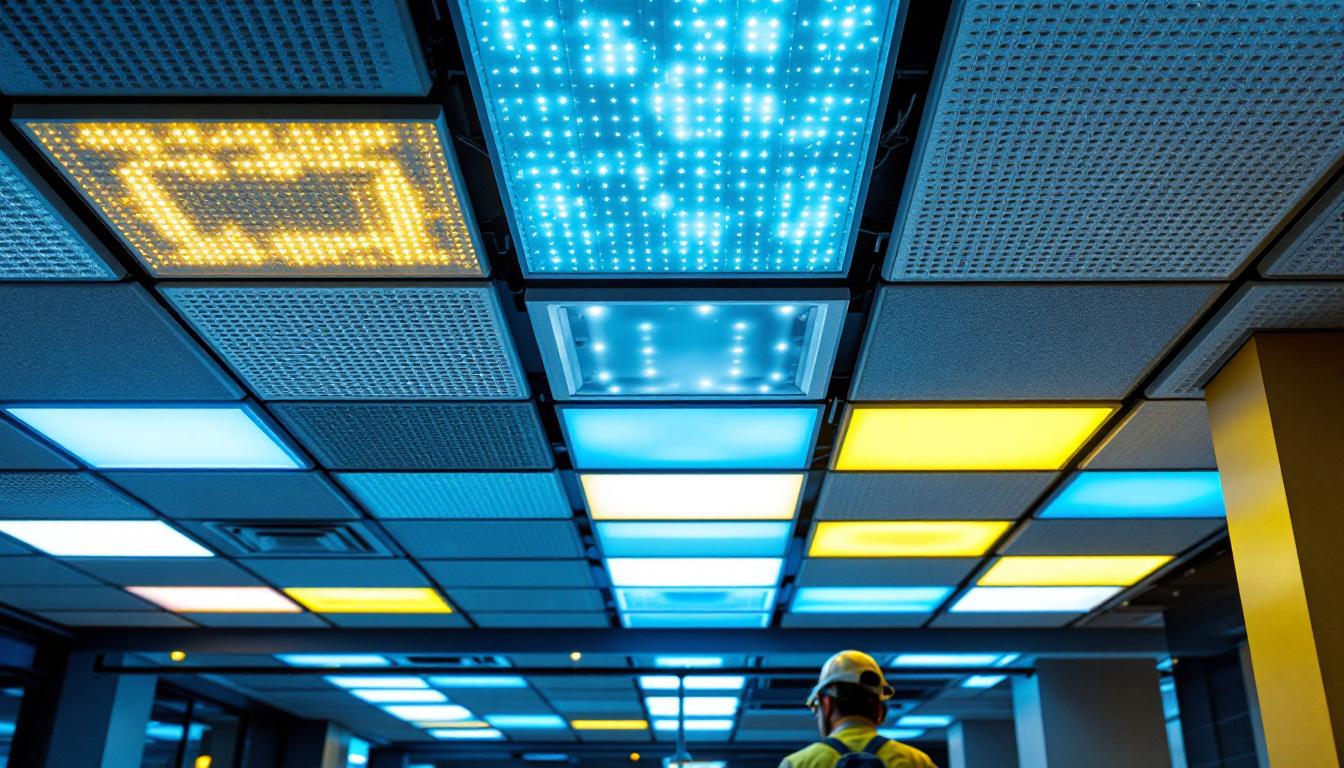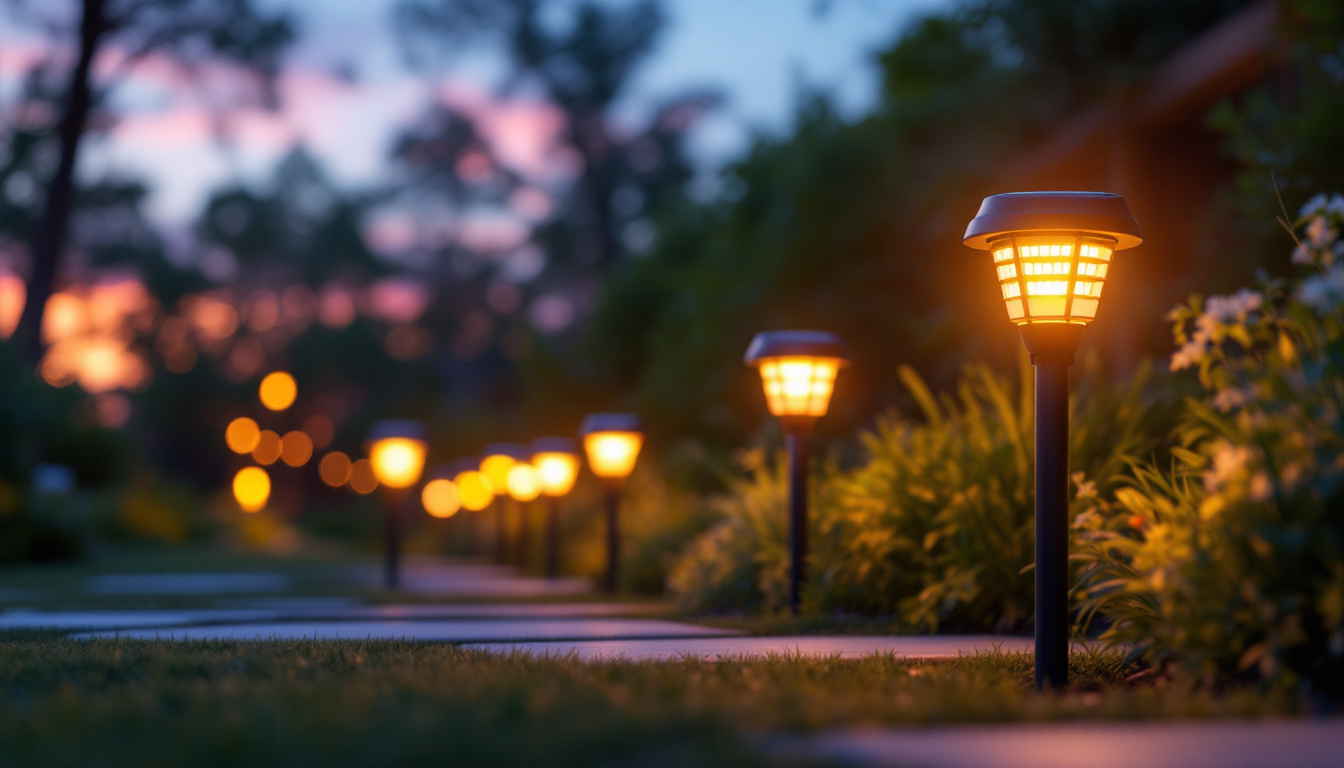
Pendent lamps have become a staple in modern lighting design, offering both functionality and aesthetic appeal. For lighting contractors, understanding the nuances of these fixtures is crucial for successful installations and satisfied clients. This article delves into the importance of pendent lamps, their various types, and essential considerations for contractors in the field.
Pendent lamps serve as more than just sources of illumination; they play a significant role in the overall ambiance of a space. Whether in residential or commercial settings, these fixtures can enhance design elements, draw attention to specific areas, and create a welcoming atmosphere.
One of the most compelling reasons to incorporate pendent lamps into a lighting design is their aesthetic versatility. Available in a myriad of styles, shapes, and materials, these lamps can complement various interior themes—from rustic to contemporary. Contractors must be adept at selecting the right pendent lamps that align with the client’s vision, ensuring that the final installation not only meets functional needs but also elevates the space’s design. For instance, a sleek, metallic pendant can add a modern touch to a minimalist kitchen, while a vintage-inspired glass fixture can evoke a sense of nostalgia in a cozy dining room. The interplay of light and shadow created by these lamps can also serve to highlight architectural features or artwork, further enhancing the overall aesthetic appeal of the environment.
Pendent lamps are particularly effective in providing focused lighting, making them ideal for tasks that require precision, such as dining areas or kitchen islands. By offering direct illumination, these fixtures can enhance visibility and improve the overall functionality of a space. Contractors should consider the specific lighting needs of the area to determine the appropriate wattage and bulb type for optimal performance. Beyond their task-oriented capabilities, pendent lamps can also be utilized to create layered lighting schemes. By combining them with ambient and accent lighting, designers can achieve a well-rounded illumination that caters to different activities and moods throughout the day. Additionally, the height at which these lamps are hung can significantly impact both their functionality and aesthetic, allowing for customization that suits the unique layout and design of each room.
Understanding the various types of pendent lamps is essential for lighting contractors. Each type serves a distinct purpose and can drastically influence the atmosphere of a room. Here are some popular types of pendent lamps that contractors should be familiar with:
Single pendent lamps are often used as statement pieces, drawing the eye and adding character to a room. They are commonly found in entryways, living rooms, and above dining tables. When selecting a single pendent lamp, contractors should consider the height of the ceiling and the scale of the space to ensure a harmonious fit. Additionally, the style of the lamp should complement the overall decor; for instance, a sleek, modern design may suit a contemporary space, while a vintage or rustic lamp can enhance a more traditional setting. The choice of materials, such as glass, metal, or fabric, can also affect the ambiance, influencing how light is diffused and perceived within the room.
Multi-light pendent fixtures consist of several pendents grouped together, creating a more dramatic lighting effect. These fixtures are particularly popular in larger spaces, where they can serve as focal points. Contractors should pay attention to the arrangement and spacing of the lights to avoid overcrowding and ensure an even distribution of light. Moreover, the use of different bulb types within a multi-light fixture can create varied lighting effects, from warm and inviting to bright and energizing. When designing with multi-light fixtures, it’s also important to consider the height at which they are installed; hanging them too low can obstruct views, while too high may diminish their impact.
Mini pendent lamps are ideal for smaller spaces or for use in clusters. They can be hung at varying heights to create visual interest and depth. Contractors should be mindful of the scale and proportion when incorporating mini pendents, ensuring they provide adequate lighting without overwhelming the space. These versatile fixtures can be used in kitchens, over kitchen islands, or in cozy nooks to add a touch of elegance. Furthermore, mini pendents come in an array of styles and finishes, allowing for creative combinations that can enhance the design theme. By mixing and matching different designs, contractors can achieve a unique look that reflects the personality of the homeowner while still maintaining functional lighting.
proper installation of pendent lamps is crucial for both safety and functionality. Lighting contractors must be well-versed in installation techniques to ensure that the fixtures are securely mounted and positioned correctly. A well-installed lamp not only enhances the aesthetic appeal of a space but also contributes to the overall functionality of the lighting scheme, ensuring that the light is distributed evenly and effectively throughout the room.
The height at which pendent lamps are hung is a critical factor that can influence both aesthetics and functionality. A general rule of thumb is to hang them 30 to 36 inches above a dining table or countertop. However, this can vary based on the specific design and purpose of the space. Contractors should assess the room’s layout and the intended use of the lighting to determine the optimal height for installation. For example, in a kitchen island setting, a slightly lower height may be preferred to create an intimate atmosphere, while in a foyer, a higher placement can make a bold statement. Additionally, the size and scale of the lamp itself should be taken into account; larger fixtures may require more space to avoid overwhelming the area.
Electrical safety is paramount when installing pendent lamps. Contractors must ensure that the wiring is up to code and that the fixtures are compatible with the existing electrical system. This may involve checking the voltage, wattage, and compatibility with dimmer switches, if applicable. Proper grounding and secure connections are essential to prevent electrical hazards. Furthermore, it is advisable to consider the use of LED bulbs, which not only provide energy efficiency but also have a longer lifespan compared to traditional incandescent bulbs. This not only reduces the frequency of replacements but also contributes to lower energy bills. When planning the electrical layout, contractors should also think about the potential for future upgrades, such as smart lighting systems, which can enhance the functionality and convenience of the installed fixtures.
The choice of bulbs can significantly impact the performance and ambiance of pendent lamps. Lighting contractors should be knowledgeable about the different types of bulbs available and their respective benefits.
LED bulbs are increasingly popular due to their energy efficiency and long lifespan. They produce less heat and are available in various color temperatures, allowing contractors to create the desired mood in a space. When selecting LED bulbs, it’s important to consider the lumens required for adequate illumination and the color rendering index (CRI) to ensure accurate color representation.
While less energy-efficient than LEDs, incandescent and halogen bulbs offer a warm light that many homeowners find appealing. They are often used in decorative fixtures where ambiance is a priority. Contractors should inform clients about the trade-offs in energy consumption and longevity when choosing these types of bulbs.
Staying updated on the latest trends in pendent lighting can help contractors offer fresh ideas to their clients. Understanding current design trends can also enhance a contractor’s reputation as a knowledgeable professional in the field.
The industrial style has gained popularity in recent years, characterized by raw materials, exposed bulbs, and minimalist designs. Pendent lamps that feature metal finishes, Edison bulbs, and simple geometric shapes are often favored in this aesthetic. Contractors should consider incorporating industrial-style fixtures in urban settings or modern lofts to align with client preferences.
As sustainability becomes a priority for many consumers, eco-friendly lighting options are increasingly in demand. Pendent lamps made from recycled materials or those that utilize energy-efficient technologies are appealing to environmentally conscious clients. Contractors should be prepared to discuss sustainable options and their benefits during consultations.
Proper maintenance is essential to ensure the longevity and performance of pendent lamps. Lighting contractors should educate clients on how to care for their fixtures to keep them looking and functioning at their best.
Regular cleaning of pendent lamps is vital to prevent dust and grime buildup, which can diminish their brightness and overall appearance. Contractors can recommend using a soft, damp cloth for most materials, while glass or crystal fixtures may require special cleaning solutions to maintain their shine. Providing clients with a simple maintenance schedule can help them keep their lighting fixtures in optimal condition.
As technology advances, clients may wish to upgrade their lighting fixtures or replace bulbs with more efficient options. Contractors should be proactive in discussing potential upgrades with clients, offering insights into the latest technologies and designs. This not only enhances the client experience but also positions the contractor as a trusted advisor in the lighting industry.
Pendent lamps are essential tools for lighting contractors, offering both functionality and design versatility. By understanding the various types of pendent lamps, installation considerations, and current trends, contractors can provide valuable insights and recommendations to clients. Furthermore, educating clients on maintenance and care can foster long-term relationships and enhance overall satisfaction.
In a world where lighting plays a pivotal role in shaping spaces, the expertise of lighting contractors in selecting and installing pendent lamps can significantly impact the success of a project. Embracing the nuances of these fixtures will not only elevate the contractor’s skill set but also contribute to creating beautiful, well-lit environments for clients.
Ready to elevate your lighting projects with the finest pendent lamps on the market? Look no further than LumenWholesale, where we provide lighting contractors with exceptional, spec-grade lighting solutions at unparalleled wholesale prices. Say goodbye to unnecessary markups and hello to a vast selection of premium lighting that meets rigorous industry standards. With free shipping on bulk orders, LumenWholesale is your go-to source for high-quality lighting that combines affordability with convenience. Don’t compromise on quality or value—choose Wholesale Lighting at the Best Value and make your next project shine with LumenWholesale.

Discover how 4ft LED light fixtures can enhance your business profitability.

Discover innovative cost-saving strategies for lighting contractors using T 100 light strips.

Discover everything about drop ceiling light tiles in our expert contractor edition—learn benefits, installation tips, and lighting insights to enhance your space efficiently..

Explore the transformative journey of solar battery lights in the lighting industry, highlighting their eco-friendly innovation, cost-effectiveness, and impact on sustainable living.